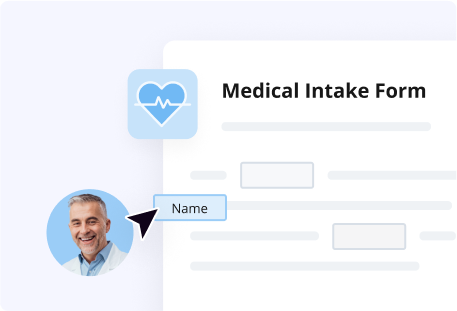Type any topic that interests you
Unlock the ins and outs of automating basic patient intake flow chart for insurance with certification

About the training program
After finishing this course, you’ll be able to take your practice to the next level by reducing your time spent on inefficient manual data collection, improving the experiences of your patients, and minimizing risks of data breaches and non-compliance with HIPAA regulations.
What’s provided:
- Comprehensive lessons covering the essential elements of developing a Flow for insurance an optimized patient intake process.
- A handy quiz that enables you to refresh and solidify your knowledge on basic patient intake Unlock the ins and outs of automating basic patient intake flow chart for insurance with certification automation.
- A badge certifying your new skills and expertise in patient intake automation.
What will you get?
- How to create basic patient intake Unlock the ins and outs of automating basic patient intake flow chart for insurance with certification Flow with dynamic fillable form(s).
- How to set up a conditional order of actions in your flow for insurance.
- How to automate data routing between external software and systems and your form.
- How to get information from patient intake flows with airSlate certification.
Who can enroll in this certification?
- Medical employees interacting with patients and dealing with insurance on a regular basis.
- Administration and support managers involved in managing basic patient intake Unlock the ins and outs of automating basic patient intake flow chart for insurance with certification.
- IT managers working with the tech system of healthcare institutions.
More courses you might like
What our students say
Start learning today
Sign now for free
Questions & answers
Typical bottlenecks of the basic patient intake process are manual data entry in flow chart, long wait times, and the risks of losing or misplacing patient documents. Automation can help handle these issues by digitizing patient intake processes, automating routine tasks like completing personal data and medical history forms for insurance care, and storing patient records electronically, which can boost precision, minimize waiting time, and enhance document encryption.
This type of software refers to applications developed to simplify and automate patient information collection and handling. Such basic patient intake application normally comes with features like dynamic Unlock the ins and outs of automating basic patient intake flow chart for insurance with certification, safe data storage, and integration with other healthcare technologies. If you need more information on how it functions, discover the certification options that airSlate Academy gives.
We created our program for everyone involved in insurance care who is looking for ways to streamline the patient admission experience through the use of contemporary tech. This group is represented by healthcare professionals with a wide range of job: from physicians and nursing staff to front-office admins and receptionists. Also, our basic patient intake flow chart course will be useful for IT professionals searching for automated options to design and implement efficient and secure systems for collecting and dealing with patient data.
Creating an account with airSlate isn’t required to register for the certification on basic patient intake flow chart Flow for insurance. Yet, you can create an account and put your knowledge into practice as you progress through the course. In any case, our course offers in-depth instructions on creating digital forms and automating workflows utilizing airSlate, making it accessible to all learners, regardless of their prior experience with our platform.
The purpose of basic patient intake flow chart is to collect and manage essential information, generally at the initial point of interaction with a patient. This information usually consists of demographic details, medical history, insurance information, and other information that will allow healthcare workers ensure that the patients receive outstanding care. By collecting these details, medical care providers can improve the care process and ensure patients receive the best possible treatment.
The basic patient intake is a essential component of patient registration. It enables healthcare providers to collect crucial patient information by means of flow chart, such as personal and contact details, health record, consultation scheduling, and insurance information. Patient registration significantly affects your clients’ general experience by establishing a favorable first impression, minimizing waiting times, and providing healthcare workers with precise data for treatment and insurance claims.











